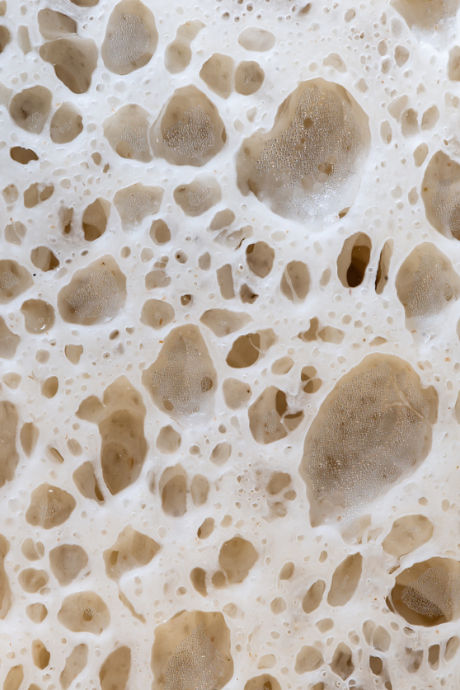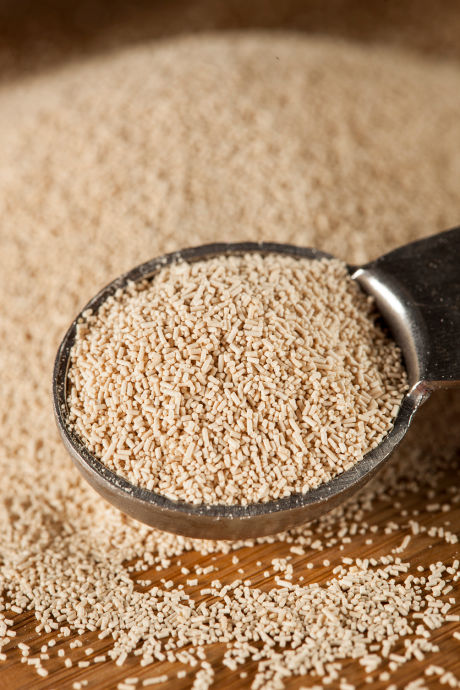Get a Rise Out of Dough: Types of Yeast
Posted by Julie on Oct 11th 2019
Baking with yeast can be daunting. After all, yeast is a living organism. Like mushrooms, it’s part of the biological kingdom Fungi. Yeast plays a key role in the scientific processes that take place in baking. In this post, we’ll explain why it’s essential and how to effectively use different types of yeast. We hope to take some of the mystery out of baking with yeast and help you achieve better results.
The Function of Yeast
Yeast is a leavening agent, which means it produces gas that makes baked goods rise. Two other leavening agents, baking soda and baking powder, are also used in baking. All three of these leaveners produce carbon dioxide gas when they’re activated. Baking soda and baking powder do so by means of a chemical process, while yeast acts biologically to produce gas. That difference is why working with yeast is somewhat more delicate than simply adding a teaspoon of baking soda or baking powder to your dough or batter.

Yeast is a living single-celled organism. In baking, it consumes the sugar in flour (along with any other sugar you might add to the dough, such as honey or granulated sugar) and releases carbon dioxide. The gluten in bread dough is elastic. When yeast releases carbon dioxide, the dough expands and traps gas bubbles inside. That’s the phenomenon that occurs when dough rises. When dough goes into the oven, the temperature is high enough to kill the yeast and cook the dough, leaving behind the space created by the gas bubbles. When your pizza crust has a huge bubble, it’s due to the biological action of yeast.
When Yeast Goes Wrong
Because yeast is alive and acts biologically, there’s more room for error than when you bake with chemical leaveners like baking soda or baking powder. When dough doesn’t rise, it means the yeast didn’t consume sugar and release carbon dioxide. There are several reasons why this may happen.
- Dead yeast: Some types of yeast can survive a few months in the refrigerator and even longer in the freezer. If your dough didn’t rise, the most likely culprit is yeast that’s no longer good. Test your yeast next time by adding a pinch of it to warm water, along with some sugar. If it foams, it’s still active.
- Water temperature: Yeast is a bit finicky where it comes to water temperature. If the water is too cold (less than 70ºF) it won’t activate the yeast. If the water is too warm, it will kill the yeast. The upper temperature limit depends on the type of yeast you’re using, but it ranges from 100ºF to 130ºF.
- Salt: Bread recipes often caution cooks about when to add salt, as it can adversely affect the action of the yeast. Specifically, salt may dehydrate the yeast and render it inactive.
- Alcohol: Another by-product of yeast respiration is alcohol. One reason to knead dough and allow it to rise a second time is to disperse the alcohol. Otherwise, concentrated areas of alcohol are detrimental to yeast.
Keep these potential pitfalls in mind when baking with yeast, and you’ll be much more likely to see your dough rise.
Types of Baker’s Yeast
In addition to baking bread, yeast is also used for brewing beer and making wine. While Saccharomyces cerevisiae is used in all of these applications, there are four types of baker’s yeast most commonly used in baking. In this section, we’ll discuss each type of yeast, including the form it takes, how it’s used, and the way it acts in recipes.
Liquid Yeast
Liquid yeast is the least processed form of yeast. While it’s unlikely that you’ve bought liquid yeast, you may have had some in your kitchen. A sourdough starter is an example of liquid yeast. It’s flour, water, and yeast. But the yeast isn’t added separately. Instead, it’s absorbed from the air and other ambient sources. This post from Baker Bettie explains the workings of a sourdough starter.
Fresh Yeast
Fresh yeast is also known as cake yeast or compressed yeast. It’s sold in a solid block, and it’s moist and crumbly and doesn’t keep long. Sources disagree on how long fresh yeast will last in your refrigerator: Epicurious cautions cooks to use it up within a week while Red Star Yeast claims it should last up to eight weeks from packaging.

Likewise, sources disagree on whether fresh yeast needs to be proofed before use. Proofing simply means testing the yeast with warm water and a pinch of sugar to be sure it’s still good, as we described above. The Spruce recommends proofing before each use, while Cook’s Illustrated says proofing isn’t necessary. If your fresh yeast isn’t nearing its expiration date, we expect it should be fine to use.
Why should you use fresh yeast? Cook’s Illustrated notes that fresh yeast produces more carbon dioxide than other types, which should yield a higher rise. From an interview with King Arthur Flour, Epicurious concludes that fresh yeast gives bread a better flavor than dry yeast. They characterized it as a “special occasion yeast,” so you consider giving it a try this year during your holiday bread baking.
Active Dry Yeast
Active dry yeast is one of the two types you’re most likely to find at the grocery store. It doesn’t contain any moisture, so it’s more stable and will keep for much longer than fresh yeast. Again, sources disagree on how long you can store active dry yeast, but the general consensus is to refer to the “best by” date on the package. You can also proof active dry yeast before using to confirm it’s still good. In fact, The Spruce and Cook’s Illustrated direct bakers to proof active dry yeast before adding it to dough. However, Epicurious says this step isn’t necessary; active dry yeast can be added along with the other dry ingredients.
Instant Yeast
Instant yeast is similar to active dry yeast, except it’s even more finely ground. It’s also often labeled as “bread machine yeast” because it dissolves so quickly that it can go straight into a bread machine. Like active dry yeast, instant yeast keeps for a long time in the refrigerator or freezer. It also requires much less time to rise. You can use instant yeast in place of active dry yeast but refer to substitution guidance in the next section.
Why choose instant yeast over active dry yeast? They have somewhat different tastes, so if you prefer one over the other, choose that one. We also like how fast acting instant yeast is. If you routinely use a bread machine to make dough or bread, instant yeast may be a better option.
Yeast Substitutions
While we expect only serious bakers have more than one type of yeast in their refrigerator at a time, it helps to know how to substitute accurately. You may want to make a recipe that calls for a specific type of yeast, while you have a different one on hand.

First, if you buy yeast in envelopes, each one contains a quarter-ounce of yeast, or 2-1/4 teaspoons. This is the same for both active dry yeast and instant yeast. If your recipe calls for a packet of yeast, simply add the contents of the packet. But if you’ve bought a jar of yeast, measure 2-1/4 teaspoons from the jar in place of a packet. Conversely, if you have packets of yeast, but your recipe calls for a teaspoon of yeast, measure out the correct amount from the packet and save the rest.
Active dry yeast and instant yeast can be used in place of one another. Use 25% more active dry yeast if the recipe calls for instant yeast. Conversely, use 25% less instant yeast if the recipe calls for active dry yeast. Recall that instant yeast is more finely ground than active dry yeast, so it takes less to achieve the same effect.

